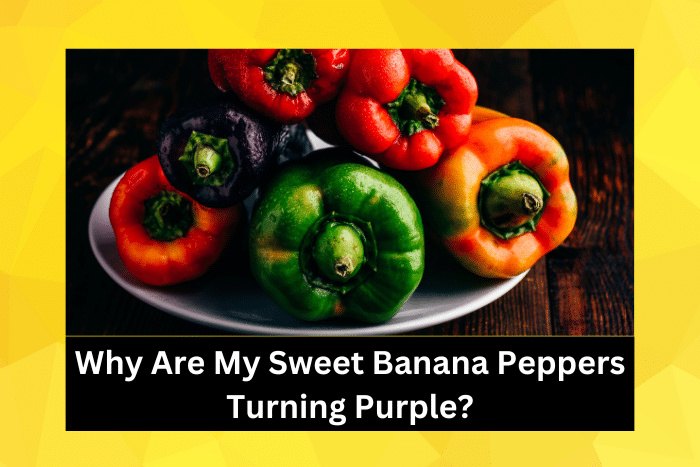Are you worried that your sweet banana peppers are turning purple?
I mean, surely something must be amiss, as your peppers should be turning yellow or green.
Then again, is this purple theme a perfectly normal phenomenon?
In this article, I’d like to explain exactly what is happening to your sweet banana peppers, as well as hopefully put your mind at rest.
It’s actually completely normal to see your sweet banana peppers turning purple. The natural color of mature pepper fruits is usually red or purple. Therefore, it is actually quite common to see red or purple streaks on a green or yellow sweet banana pepper. In truth, the yellow or green colors that you’re used to seeing are actually man-made through years of selective breeding.
1. Are Purple Streaks Completely Normal For Sweet Banana Peppers?
Firstly, let’s get the main thing out of the way, it’s actually completely normal to see your sweet banana peppers turning purple.
In truth, this is more likely to be purple streaks, as opposed to purple all over, but a complete change to purple can still occur.
The main reason for this is due to the water-soluble pigments known as anthocyanins, which are typically located near the surface of the pepper.
Now, something you may not be aware of is that the “natural” color for pepper fruits that have matured is either red or purple.
Therefore, there was a time when if your peppers had turned red or purple, you knew they were ripe for picking.
Don’t worry, I’ll explain in a moment why sweet banana peppers are no longer this “natural” red or purple color.
Weirdly enough, the natural purple or red color of peppers makes them more visible to creatures such as birds and humans.
So, in effect, both ourselves and birds could literally spot a pepper from a mile off.
This also means that we (and the birds) are more likely to eat these peppers, but this will also mean that we will typically spread the pepper seeds far and wide.
Obviously, this is great for growing more peppers.
Funnily enough, fruit-eating insects don’t actually pick up on the colors red and purple that well.
So, in effect, the yellow and green color of sweet banana peppers is actually easier for insects to spot.
So, why exactly are sweet banana peppers yellow and green nowadays?

2. Do Yellow, and Green Sweet Banana Peppers Come From Selective Breeding?
So, you’re now aware that mature pepper fruits were originally red or purple.
However, as you can clearly see, they are yellow or green nowadays.
To be honest, this is nothing more than “human interference,” although there’s no real rhyme or reason behind it.
It has been said that sweet banana peppers were “converted” into yellow and green, as these lighter-colored peppers wouldn’t have the rich and strong flavors typically associated with red and purple peppers.
In effect, many years ago, gardeners chose to selectively breed a freak sweet banana pepper.
Basically, they found there were peppers where the anthocyanins weren’t concentrated properly, thus producing a yellow or green pepper at maturity.
These yellow and green peppers have been bred ever since to produce the sweet banana peppers we’re used to seeing nowadays.
That being said, even peppers that are supposed to be entirely purple were also bred.
This involved accentuating the purple anthocyanins over the red ones.
The main reason for this is that red is a far more visible color than purple.
In fact, if you look very closely at red fruit, you’ll occasionally notice a purple streak.
However, the breeders of peppers have never been able to completely control all anthocyanins production.
Hence, you’ll occasionally get a sweet banana pepper with purple streaks.
These purple streaks actually become more noticeable due to fluctuations in temperature and the radiation from the sun.
Why Do My Banana Peppers Have Dark Streaks?
Final Thoughts
So, I hope you understand that it’s perfectly normal to see purple streaks on sweet banana peppers.
In fact, these peppers were originally red or purple.
However, many years ago, gardeners actually selected peppers for breeding specifically to produce the yellow and green peppers we more commonly see nowadays.
The purple streaks you see on sweet banana peppers are due to anthocyanins located near the surface of the pepper.
Plus, purple streaks can be further accentuated due to the sun and fluctuations in temperature.
Talking of strangely colored fruit, why not read my article on whether blue bananas have been genetically modified?
